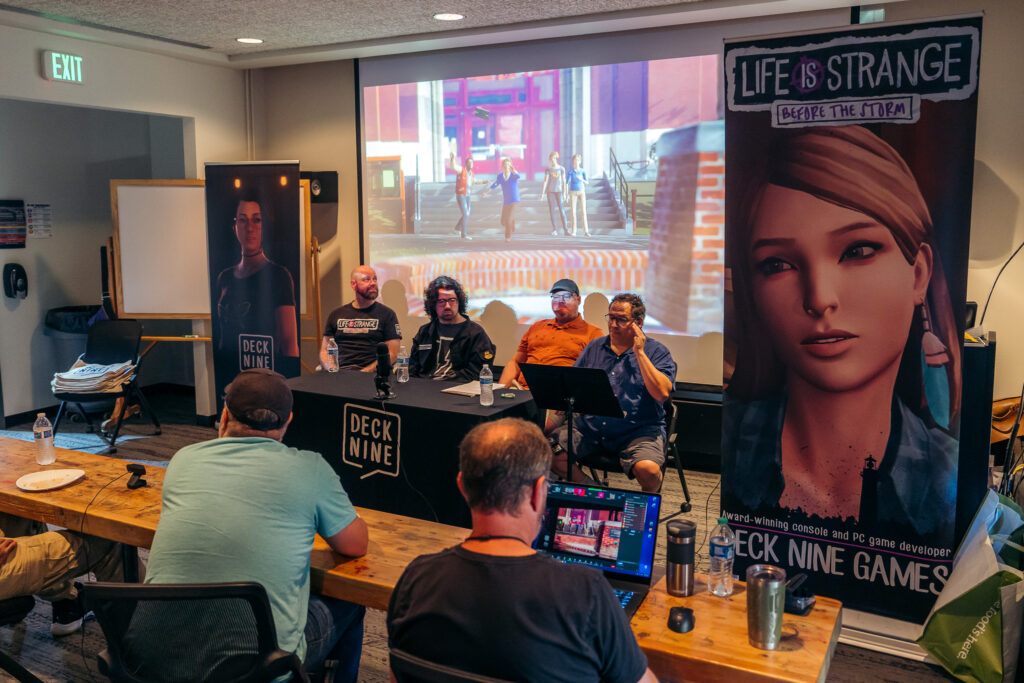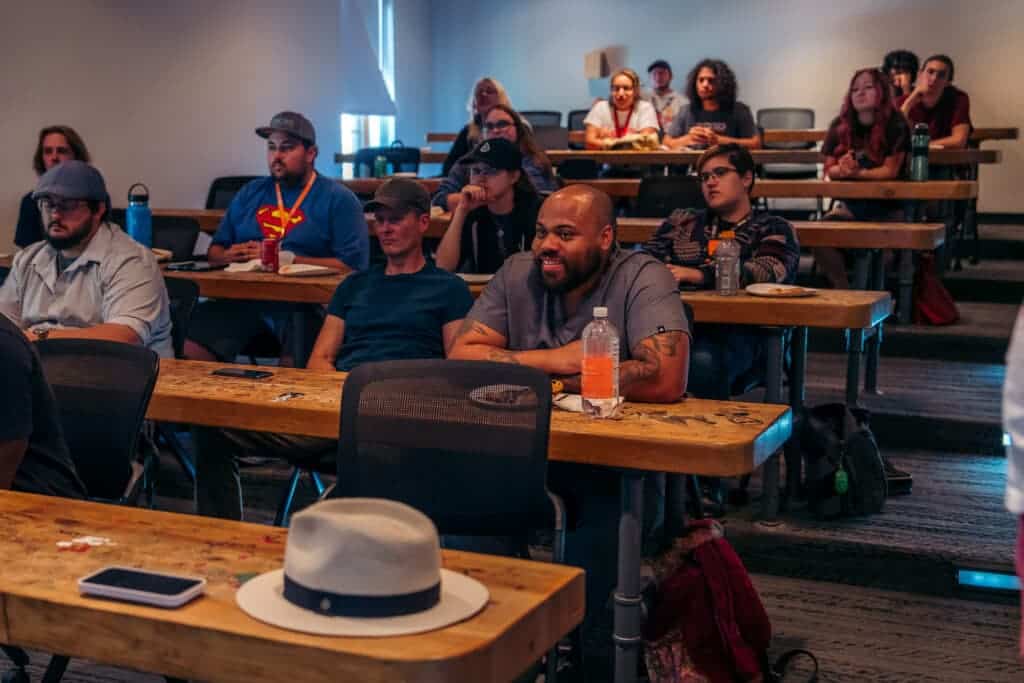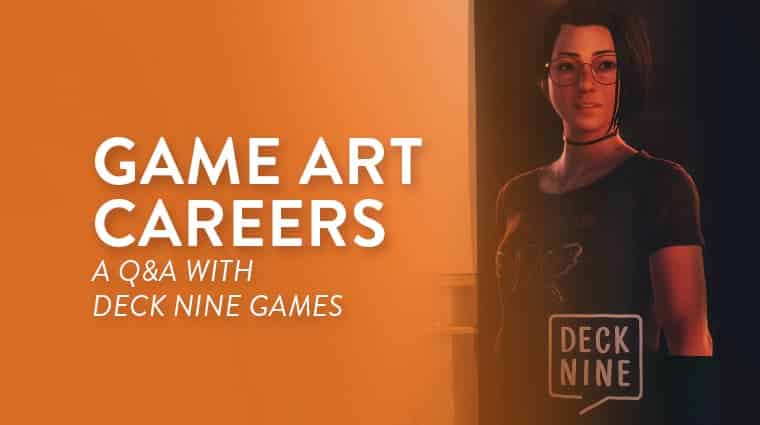What does a game art career look like? Independent video game studio Deck Nine Games, producer of installments of the hit series “Life is Strange” and “The Expanse,” recently visited Rocky Mountain College of Art + Design to answer that question. Students in RMCAD’s Nexus Club, an all-major student organization, were in attendance on-campus and online to get an inside look into the video game industry as well as receive portfolio advice from working professionals. We rounded up some of our favorite questions and answers to share with those interested in this in-demand career path.

What advice do you have for Game Art + Animation students?
Network with industry professionals and keep learning new technologies to keep up with the fast-paced world of video game development (Psst. Alumni, use RMCAD Renew to keep up with industry advancements). Our team loves to give studio tours, critique portfolios, and give any feedback we can to level up the next generation of industry professionals. Whatever you’re trying to learn, spend each day exploring the software to learn something new, whether that’s in Unreal, ZBrush, or your go-to-tool in class.
What trends do you see changing within the industry?
Working incredibly long hours is less popular with new artists entering the industry, and it simply isn’t celebrated anymore. “That was the mentality for a long time while I was in the industry,” explained Lead Environment Artist Tommy Spampinato. “Culture shifts constantly, and so what was trending years ago isn’t necessarily popular among artists today.” Additionally, if you’re a junior artist, we recommend you specialize in a specific topic within game art to bring increased value to a team and increase your chances of landing a job.
What are the types of roles at game development studios?
There are many roles that are often found in game studios. Some include game designers, developers, producers, game artists, writers, animators, sound engineers, QA testers, UI/UX, level designers, and much more. Of course, sometimes you need subject matter expertise outside of the organization to create realistic gameplay. For one of our games, we hired a mixed martial arts expert so that we could capture realistic fighting movements and animations in our game.

How did you get into the gaming industry?
“I took a bit of an unconventional route into the industry,” UI Artist David Kosta explained. “I went to school for Media, Arts + Animation, but not necessarily video games. I knew I wanted to make video games, but I didn’t know what I wanted to do once I got into the industry. I eventually got an internship and my boss wanted to make a video game, so I put my skills to the test and gave it my best shot. It wasn’t a great game, but that got my foot in the door. It was released on PC and mobile, which was enough to get me into Vigil Studios where I first met Tommy Spampinato (Lead Environment Artist, Deck Nine). Fast forward to today and I was able to grow my skill set, and I’ve been at Deck Nine for over seven years now. I love the type of games we make. One of my focuses is creating posters, journal pages, and album covers.”
In conclusion, RMCAD students in attendance took away invaluable information from Deck Nine’s expert panelists. Interested in a career in Game Art? Check out our online and on-campus programs. To register for future events, visit the RMCAD events calendar.
Content in this story has been edited for brevity and clarity by the author, but is meant to retain the significance and purpose of the original speaker.

